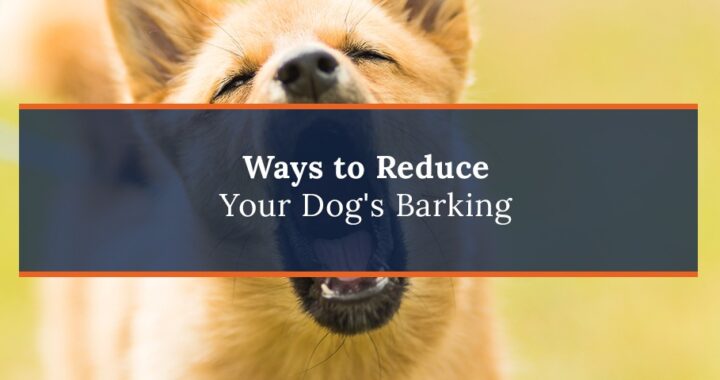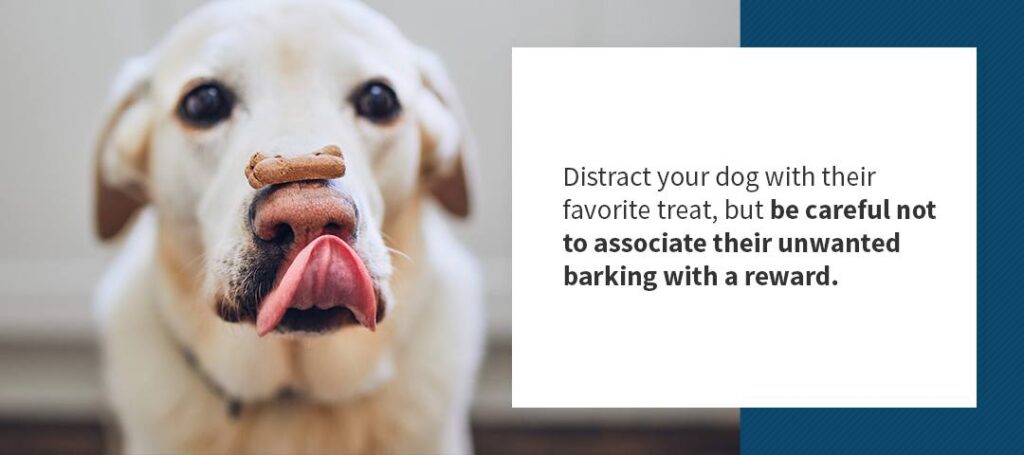Any dog owner will tell you that some barking is normal and expected with a pet dog, as it’s one way your dog communicates with you and other animals. However, excessive barking is more than a distraction or nuisance — it could also signal a problem with your dog or their environment that you need to address.
Understand and Remove the Source
One thing you can do to stop your dog from barking is to identify the source and remove it, if possible. Each dog is different, and their background, genetics, upbringing and surroundings may affect them differently from one day to the next. What prompts barking in one dog may not bother another.
Start with these common barking causes:
- External noises: Your dog may bark at external sounds, like passing sirens, traffic, car alarms, other dogs barking and neighbors walking or talking nearby. Barking at external noises is especially common if your dog isn’t used to those sounds, like after moving to a new neighborhood. Combat noise-related reactions with white noise, like the television, music or a blowing fan. If your dog is crate trained, placing a blanket or crate cover over their cage may help create a more soundproof environment.
- Boredom: Some dogs will bark simply because they are bored and aren’t getting enough stimulation. This is especially true if your dog is used to eliciting a reaction from you when they make noise. Work out your dog’s energy with interactive toys, long walks and playtime at the park, or create a safe space for them to run, play and explore in your yard.
- Distress: In some cases, abnormal or excessive dog barking could indicate distress, like sickness, pain, fear or anxiety. If the barking is accompanied by any other worrisome symptoms, contact your vet and let them know what’s going on. If your pup seems in good health, they could be afraid or anxious to be alone when you or a family member leaves. Consider a local doggy day care facility or ask a trusted friend to stop by when you know you’ll be away for a while.
In some cases — like with a noisy roadway or a neighborhood dog — it’s impossible to remove the source of your dog’s barking. That’s why preventive and correctional behavior training with a professional is essential for a quiet home and obedient pup.
Use Distractions
Distractions are not a long-term solution to your dog’s barking problem, but you can use them to supplement your training regimen or quiet your dog quickly.
Most dogs will respond to one or more of the following distractions:
- Offer a treat: Distract your dog with their favorite treat, but be careful not to associate their unwanted barking with a reward. Instead, use the treat to train your puppy not to bark at external sounds and reward them when they pay attention to you and your commands to “quiet” or “settle.”
- Play with a toy: If your dog is barking, it’s the perfect time to implement some active play. Toss a ball or rope and reward them with verbal praise when they stop barking and instead focus on your game of catch or fetch.
- Give them a bone: Bones and other chews, like toys filled with peanut butter, keep dogs distracted for several minutes, as they offer an engaging way to work for a reward. Always monitor your dog when giving them a chew that could break into smaller pieces.
No matter what distracts your pet, remember to keep it calm and gentle. Avoid punishing your dog for barking or raising your voice, which could worsen the problem.
Ask Your Vet About Anti-Stress Devices and Medication
Anti-stress methods are a great tool to supplement existing training or offer some additional support to extra vocal pups. If your dog has a medical condition or unstable background, these tips are helpful for keeping them feeling calm and safe:
- Weighted clothes: Invest in a comfortable weighted jacket, vest or shirt for your dog to wear during stressful situations. Weighted dog clothes work similarly to weighted blankets for humans, which are often used as a supplemental treatment for managing symptoms of anxiety and insomnia.
- Calming chews: Calming chews are available at pet stores and contain natural ingredients that aid in calming your dog and promote a more relaxed, sometimes tired state. They are available for multiple sizes and breeds and are generally safe — but always consult your vet before offering them to your pet.
- Diffusers and sprays: Pet stores also sell calming air diffusers or sprays infused with species-specific pheromone chemicals, which may help calm your barking dog. If your pet is new to the home, these sprays might help acclimate them to their new siblings and surroundings.
- Prescription medication: If your dog’s barking becomes excessive or is accompanied by other behavioral concerns, consider asking your vet about prescription medication. They can determine if your dog might be suffering from chronic anxiety or health issues and prescribe an appropriate medication based on your pet’s age, weight, breed and medical history.
Always monitor your dog when using an anti-stress device or medication for the first time, and consult your vet with any questions. Never double the dosages or use tools that do not fit your dog’s frame, as doing these things could cause harm and worsen your pet’s stress.
Consult With a Professional Trainer at Off Leash K9 Training
Although identifying and removing the source of your pet’s distress, distracting them with toys and treats and using supplemental anti-stress tools are effective, nothing replaces training your dog to stop barking. A professional dog trainer will get to know your dog, including their habits, fears and triggers, and help you take steps to correct excessive behavior.
The team at Off Leash K9 Training specializes in strengthening the bond between you and your dog while teaching you both the tools you need to live a happy, calm life together. This includes puppy-specific packages for new pets, obedience training packages for adult dogs and training tailored specifically to your concerns, like aggression, leash pulling and excessive barking.
Contact us today to learn how we can help transform your noisy home into a calm, enjoyable space for you and your furry friends.



